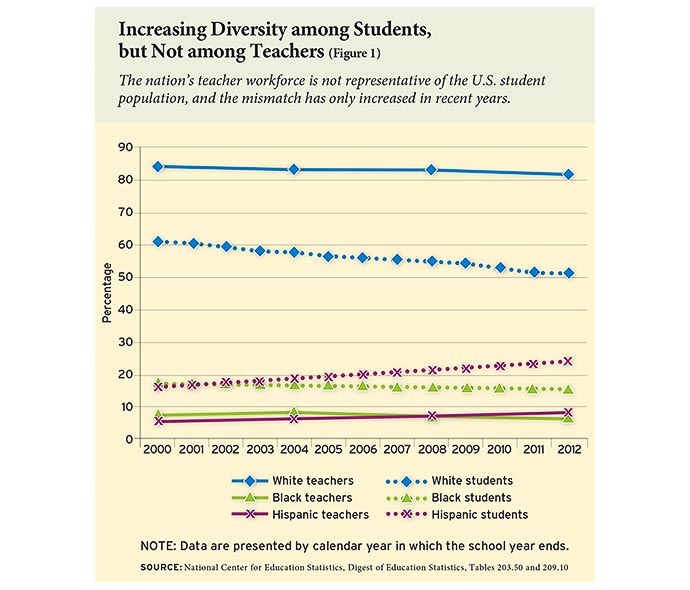Leah Binkovitz | @leahbink | April 20, 2017
The impact of a great teacher can last a lifetime. That might be especially true for black male students. A new study reveals that the impact of black teacher on a black male student can mean the difference between graduating high school or dropping out.
The paper, published by the German economic research group Institute of Labor Economics last month, builds on a body of evidence that documents the effect on students of having teachers of the same race. Having a teacher that shares a student's background can have positive effects on that student's test scores, behavior and attendance. But the long-term benefits were less well-documented, the study's authors note.
The authors, affiliated with American University; University of California, Davis and Johns Hopkins University, looked at black public school students in North Carolina who entered third grade between 2001 and 2005. They also examined data from students in Tennessee from another study. They found that exposure to at least one black teacher in third, fourth or fifth grade, has significant outcomes for black males.
"On average," the study found, "having had at least one black teacher in grades 3-5 reduces (black) males’ dropout probability by about eight percentage points, effectively halving the black male dropout rate."
And for low-income, black male students, the study concludes, "conservative estimates suggest that exposure to a black teacher in primary school cuts high school dropout rates 39 percent" in addition to increasing the likelihood that the student will take a college entrance exam and plan to attend college. Article continues below graph.
"Our results suggest that efforts to match black students with at least one black teacher in primary school could begin immediately by thoughtfully matching students to current teachers," the authors argue, saying that persistent attainment gaps between student groups "are not impervious to policy changes."
There are different explanations for why teacher matching can come with positive effects for some. Some researchers say a black teacher may be more likely than a white teacher to have higher expectations of a black student. And others have shown, for example, that when a black student has a black teacher, that teacher is less likely to interpret the student's behavior negatively, presumably resulting in fewer suspensions that put children at risk of dropping out.
But in some areas, black students may find themselves underrepresented in the teacher population. And in the Houston area's five largest school districts, the composition of black students and black teachers varies considerably. In Houston Independent School District, for example, more than a third of teachers are black, compared to a quarter of students. But in suburban Katy ISD, where 10 percent of students are black, just 6 percent of teachers are black.
Across those districts, however, there is always a higher percentage of Hispanic students than Hispanic teachers. And the percentage of white teachers always exceeds the percentage of white students.
Article continues after charts.
In light of what the authors describe as "mounting evidence of teacher-student demographic match effects on short-run, immediate outcomes such as test scores, attendance and suspensions," this appears to be a significant mismatch.
While the research for Hispanic students is less clear, suggesting a need to better understand the context in which matching is or isn't happening, the lack of representation has been a concern in recent years as the country's Hispanic community grows. In fact, some of the states with the highest number of Hispanic students -- California and Texas included -- have the biggest gaps between the percentage of Hispanic students and teachers.
"Teachers of color serve as role models and cultural liaisons for their students," states a document on Hispanic teacher recruitment from the Department of Education. "The number of Hispanic teachers is not increasing at a rate commensurate with the growth of Hispanic students," notes the document, adding, "the Hispanic student-teacher gap is likely to continue without more effort to close it."



